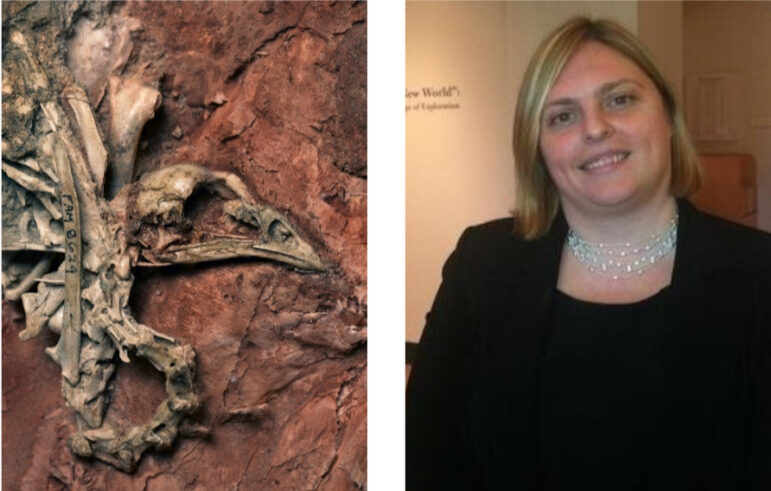At Bruce Museum, Curator of Science Dr. Daniel Ksepka and Curatorial Associate Kate Dzikiewicz have identified a new species of extinct bird.
Following the news of this exciting new discovery, the Bruce Museum will lead a webinar as a part of their Bruce Presents series, entitled New Discoveries in Paleontology: Unearthing Developments in the Field.

Right: Suzanne Lio, Managing Director/COO of the Bruce Museum.
The webinar will feature Dr. Daniel Ksepka, with Curatorial Associate Kate Dzikiewicz, and give audience members an opportunity to delve further into this groundbreaking research. Bruce Presents – New discoveries in Paleontology will take place virtually via Zoom on Thursday, October 20th at 6:00PM EST.
The fossil bird sat unstudied for nearly a century. Today it has a name. Dr. Ksepka and Ms Dzikiewicz led a study of the fossil. They used CT scans to reconstruct the shape of the brain and analyzed skeletal features to determine the placement of the fossil in the evolutionary tree of birds.
They named the species Centuriavis lioae, in honor of their colleague Suzanne Lio (Managing Director/Chief Operating Officer of the Bruce Museum).
Centuriavis lioae was identified as an extinct member of the family Phasianidae, which includes modern day grouse and turkeys. The holotype skeleton (the fossil used to propose the new species name) is beautifully preserved, with the head, neck, and wing still in life position.
About the size of a modern sage grouse, Centuriavis lioae lived in Nebraska approximately 11.4 million years ago, when the American Midwest had a savanna-like ecosystem. The bird dwelled alongside now-extinct species including primitive rhinos and camels. The CT scans show that like modern grouse and turkeys, it had relatively small olfactory bulbs and large optic lobes. Smaller isolated bones referred to the same species suggest that males of Centuriavis lioae were larger than females, as is the case in turkeys and some grouse.
The name Centuriavis means “century bird”, referencing the fact that the fossil was collected nearly a century ago in 1933. “It may come as a surprise that such a beautiful and nearly complete fossil could go unstudied for almost one hundred years” said Ksepka. “This isn’t a unique case – there are relatively few paleontologists in the world, and only a small percentage of those study birds. Many other important fossils are surely sitting in cabinets waiting to be studied or even still inside their plaster jackets waiting to be freed from the rock”.
“One of the rewarding things about paleontology is that when you identify a new species, you have the opportunity to coin a name that describes some key feature of the animal, honors a person, or ties the fossil to a place” said Dzikiewicz. “In this case, we were thrilled to honor Suzanne Lio for her tireless efforts to advance the Bruce Museum’s mission, especially in the natural sciences.”
When asked about the honor, Lio responded “I’m so thankful to have even been considered for this honor. I’m truly blessed to work for the Bruce Museum where I’m surrounded by such an incredible, dedicated team of employees. This is really a celebration for all of us at the Bruce.”
The paper featuring Ksepka and Dzikiewicz’s findings was published in Journal of Paleontology on October 17 .
Citation:
Ksepka, D.T., C.M. Early, K. Dzikiewicz, and A.M. Balanoff. 2022. Osteology and neuroanatomy of a phasianid (Aves: Galliformes) from the Miocene of Nebraska. Journal of Paleontology.